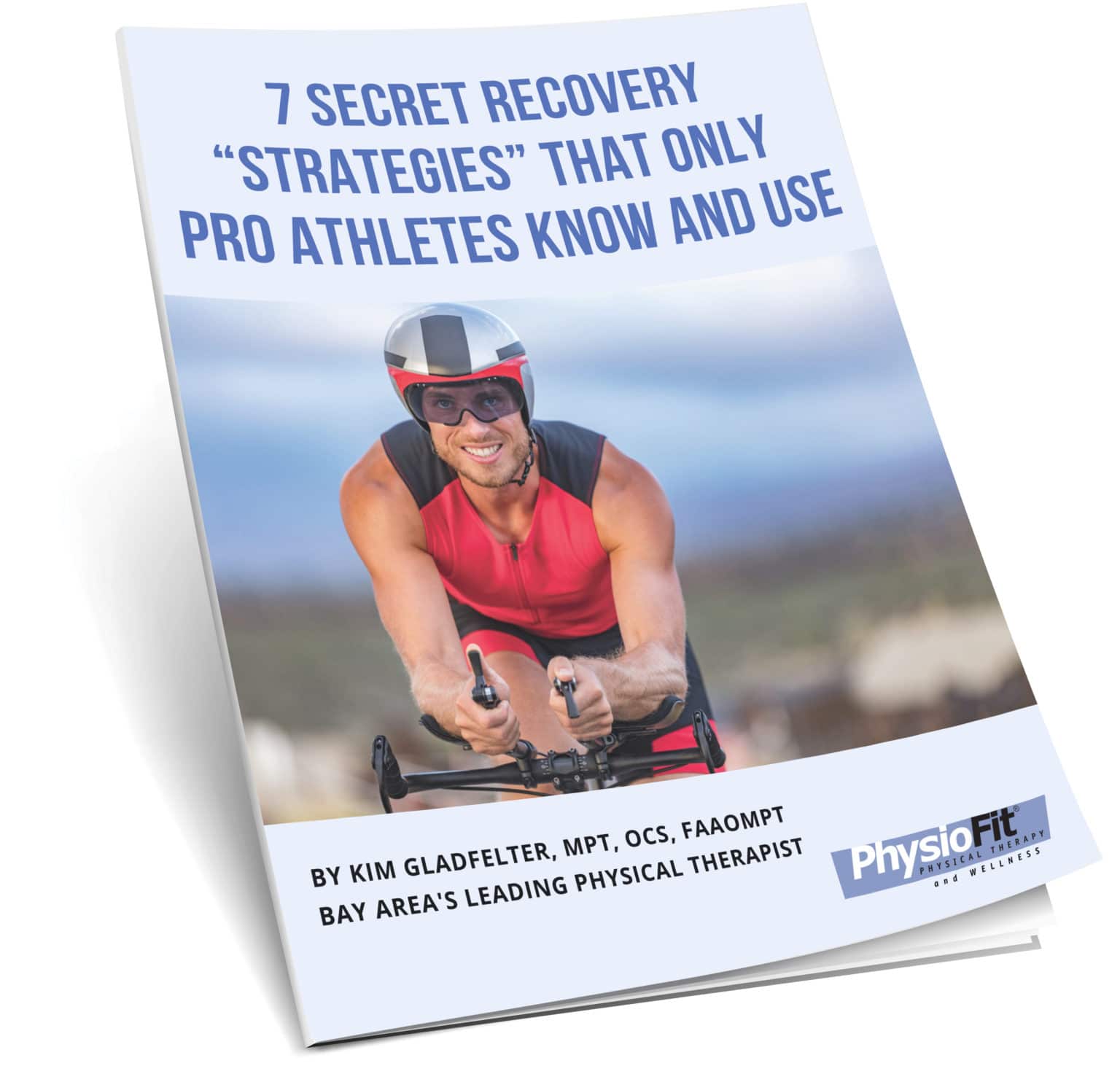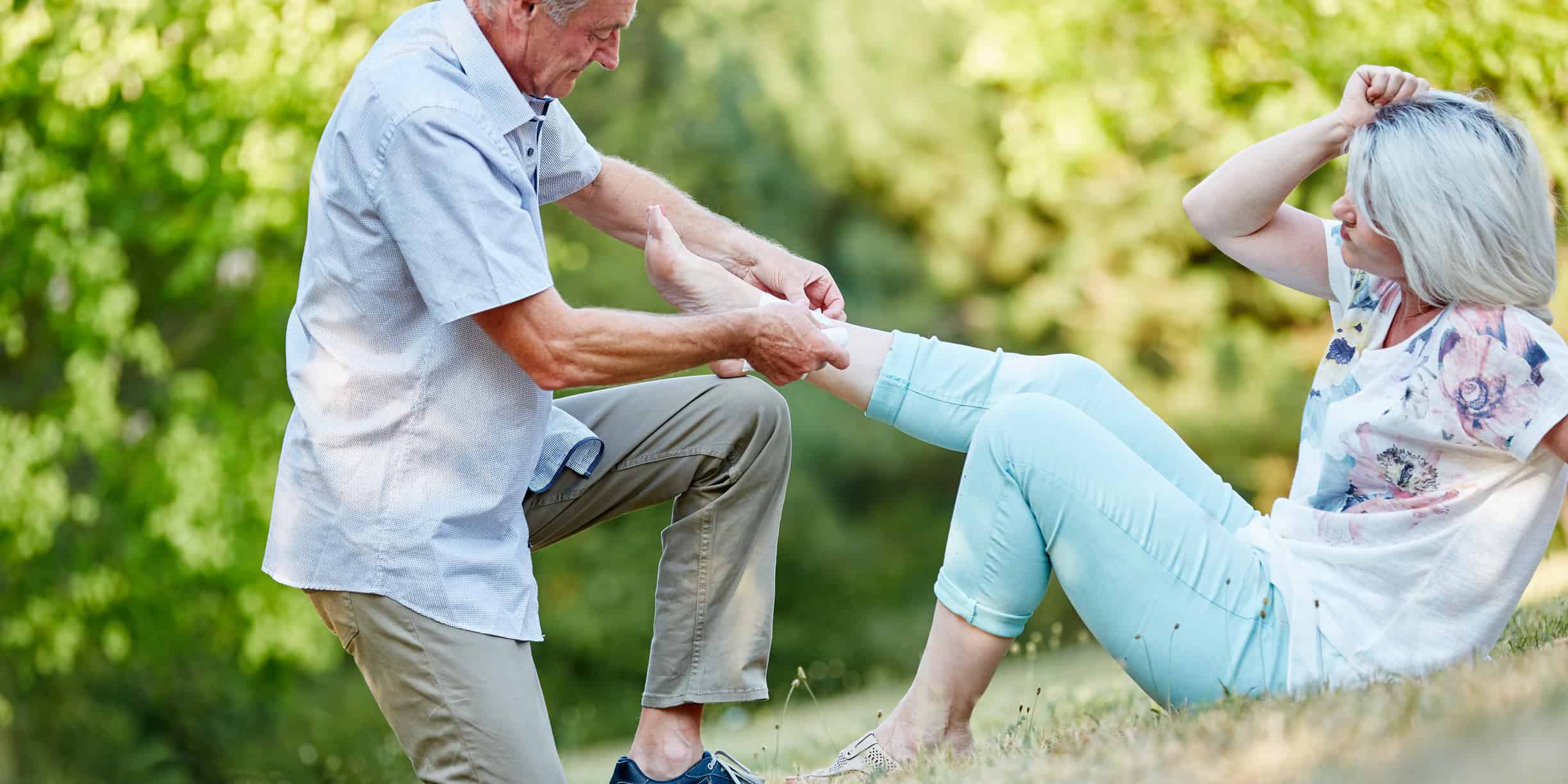Tired Of Waiting To Get Back In The Game? Physical Therapy Can Help Relieve Your Sports Injury

Kim Gladfelter, MPT, OCS,
FAAOMPT,
PHYSICAL THERAPIST, SPEAKER, AUTHOR
- Are you worried about a sports injury that isn’t going away on its own, no matter how much "rest" you've been told to get?
- Are you tired of doing stretches, or other exercises for your sports injury that just don’t seem to work?
- Does it concern you that you’re unable to get back in shape because you are worried that exercising might hurt you more?
- Are you having trouble keeping up with friends and family, and missing out on your favorite activities because of pain?
- Do you wish you could improve your performance in your favorite sports?
If that's happening to you, you're not alone. We hear this type of thing all the time! In fact, Sports Injuries are one of the most common problems that we see in our physical therapy clinic in Los Altos, CA. We also treat people in the surrounding cities of Mountain View, Sunnyvale, Cupertino, Palo Alto, Campbell, Santa Clara, and San Jose.
No matter what type of sport or physical activity you love, staying healthy and avoiding injury is important. Unaddressed aches and pains may lead to long-term chronic issues that can affect you on and off the field.
At PhysioFit Physical Therapy & Wellness, we’d love to help you get off the sidelines and return to the activities you love, feeling and performing better than ever.
Signs & Symptoms
Sports Injuries can present themselves in many ways. If you are currently experiencing any of the following
symptoms, physical therapy could be a great place to start.
An acute sports injury develops suddenly, often after a specific type of impact or movement such as an awkward pivot, jump, fall, or even a collision with another player or object. The hallmark warning signs of an acute sports injury include pain, redness, warmth, and swelling.
Conversely, a chronic sports injury develops more gradually over time, often as a result of repetitive microtrauma to a specific tissue or area of the body. Untreated acute injuries can turn into chronic sports injuries too, which is one reason why I don't recommend ignoring a sports injury or "working through" the pain and hoping it'll just go away on its own.
Why PhysioFit Physical Therapy & Wellness?
You will have a private 1-1 evaluation with a physical therapist. The evaluation includes your medical history, a movement analysis, and an assessment of your posture, muscles, and nerves.
EMOTIONS YOU MAY BE FEELING
- Disappointment
- Frustration
- Depression
- Sadness


Typical limitations
- Being “benched”
- Playing another position on the team
- Not being able to perform at all
- Losing other freedoms outside of sports
- Overall happiness may feel limited
Get your desired outcome
- Repair
- Strengthening
- Improved performance
- Improved balance
- Get back on the floor/field/court etc.

Let's Get Started!
Are You Suffering From One Of These Sports Injuries?
Knee injuries: the knee may be a simple hinge joint, but it’s made up of a complex array of structures that are essential for any and all weight-bearing activities involving power, speed, strength, balance, stamina, and more. The knee also happens to be one of the most common joints injured during sports due to factors like repetitive stress, twisting, and pivoting.
Sprains and strains: ligaments connect bone to bone and can become sprains when they are stretched or stressed beyond what the tissue can safely handle. Ligament sprains during physical activities are common in the elbow, ankle, and knee. A strain is a similar type of overstress injury that affects muscles. Muscle strains, or “pulled muscles,” are common in tissues such as the quadriceps, groin, hamstring, and biceps.
Shin splints: repetitive pounding and stress from running or jumping can lead to microscopic tears and inflammation in the muscles on the front of your shins. This can cause shin splints, known clinically as medial tibial stress syndrome. In addition to stretches, exercises, and other physical therapy interventions, techniques to heal and prevent shin splints include footwear modifications and proper warm-up routines.
We are happy to talk to you about how PhysioFit Physical Therapy & Wellness can help people in Los Altos, Mountain View, Palo Alto, Cupertino, Sunnyvale, Santa Clara, and San Jose, CA.
For Anyone Suffering From a Sports Injury:
FREE GUIDE: "7 Secret Recovery "Strategies" That Only Pro Athletes Know and Use"
Everything you need to know about Physical Therapy for Sports Injury Rehabilitation!

Sports Injuries Frequently Asked Questions:
Certain sports are more likely to lead to injury, including basketball, racquetball, swimming, baseball or softball, soccer, gymnastics, lacrosse, and hockey. That said, a sports injury can occur in any type of exercise or physical activity and can impact anyone from novices to elite competitors.
You may be more at risk for developing a sports injury due to factors like prior injury history, poor sleep and nutrition, ill-fitting shoes or equipment, over-training, underlying postural imbalances, and impaired movement mechanics.
So many people think that their sports injury is "not that bad" and it will get better with just a little rest and they will quickly be able to exercise and play their sport again. But when you do go back to your sport again, you are restricted or limited, which can make things even worse than when they first happened.
You see, most people will have little to no pain when they rest... And then when you start back up, the pain comes back. And no matter how much you rest it, it doesn't seem to get any better.
- First, you need to make a decision about getting help. So many people procrastinate for so long, thinking that the pain will "just go away with time", but then 6 to 8 months down the line they’re still putting up with it, and nothing’s changed… Or it gets worse.
- Next, do the RIGHT exercises. One of the best things to help you ease your pain from a sports injury is to do the right series of progressed exercises - the right exercises given to you by a Physical Therapist will help reduce pain, and allow you to move freely again - and make sure that the problems don’t come back any time soon.
- You will want to avoid "RESTING TOO MUCH.", The irony is that rest is usually the worst thing you can do for sports injuries... especially for too long. Have you ever tried to get up from the couch after resting for a while, only to find that it is painfully difficult because of stiffness and tightness? One of the absolute worst things you can ever do that slows the recovery process is sit for prolonged periods of time or rest in the same position for more than 30 minutes at a time. If you rest too much, you will feel that stiffness and tightness. It would really help if you were given the appropriate strengthening exercises, combined with the appropriate hands-on treatment, to get you active and healthy as quickly as possible.
- You need to get some real, “hands-on” Physical Therapy treatment. PT is proven to help people with pain. In fact, at PhysioFit we see these injuries all the time. If your injury is stopping you from being active or playing your sport, affecting your job, if it threatening your independence, or getting in the way of spending quality time with family and friends, a Physical Therapist can help get you back to living the life you deserve as quickly as possible.

 Los Altos, CA
Los Altos, CA



